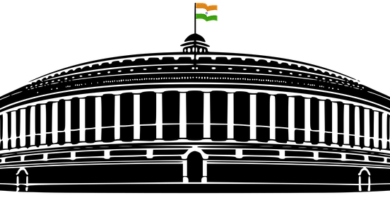Motor Vehicles Act 1988 & Road Safety and Motor Vehicles (Amendment) Bill 2019
Context:
Ministry of Road Transport & Highways Extends Validity of Documents Related to Motor Vehicles Act, 1988 and Central Motor Vehicle Rules, 1989 till 30th September, 2021
About Motor Vehicles Act, 1988 :
- The Motor Vehicles Act, 1988 The Act came into force from 1 July 1989.
- It replaced Motor Vehicles Act, 1939 which earlier replaced the first such enactment Motor Vehicles Act, 1914.
- The act is amended by The Motor Vehicles (Amendment) act, 2019.
- The Act provides in detail the legislative provisions regarding licensing of drivers/conductors, registration of motor vehicles, control of motor vehicles through permits, special provisions relating to state transport undertakings, traffic regulation, insurance, liability, offences and penalties, etc. For exercising the legislative provisions of the Act, the Government of India made the Central Motor Vehicles Rules 1989.
Defination:
Motor vehicle: Any mechanically propelled vehicle adapted for use upon roads whether the power of propulsion is transmitted from an external or internal source of power. The Motor Vehicles Act, 1988, like the earlier Act of 1939, makes the insurance of motor vehicles compulsory. The owner of every motor vehicle is bound to insure his vehicle against third party risk. The insurance company, i.e, the insurer covers risk of loss to the third party by the use of the motor vehicle.
Amendments
- Indian Motor Vehicles Acts, from 1914-2016
- Indian Motor Vehicles (Amendment) Act, 2017
- Indian Motor Vehicles (Amendment) Act, 2019
- Indian Motor Vehicles (Amendment) Act, 2019
The Motor Vehicles (Amendment) Bill, 2019 was introduced in Lok Sabha on July 15, 2019 by the Minister for Road Transport and Highways, Mr. Nitin Gadkari. The Bill seeks to amend the Motor Vehicles Act, 1988 to provide for road safety. The Act provides for grant of licenses and permits related to motor vehicles, standards for motor vehicles, and penalties for violation of these provisions.
- Compensation for road accident victims: The central government will develop a scheme for cashless treatment of road accident victims during golden hour. The Bill defines golden hour as the time period of up to one hour following a traumatic injury, during which the likelihood of preventing death through prompt medical care is the highest. The central government may also make a scheme for providing interim relief to claimants seeking compensation under third party insurance. The Bill increases the minimum compensation for hit and run cases as follows:
- in case of death, from Rs 25,000 to two lakh rupees, and
- in case of grievous injury, from Rs 12,500 to Rs 50,000.
- Compulsory insurance: The Bill requires the central government to constitute a Motor Vehicle Accident Fund, to provide compulsory insurance cover to all road users in India. It will be utilised for:
- treatment of persons injured in road accidents as per the golden hour scheme,
- compensation to representatives of a person who died in a hit and run accident,
- compensation to a person grievously hurt in a hit and run accident, and
- compensation to any other persons as prescribed by the central government.
This Fund will be credited through:
- payment of a nature notified by the central government,
- a grant or loan made by the central government,
- balance of the Solatium Fund (existing fund under the Act to provide compensation for hit and run accidents), or
- any other source as prescribed the central government.
- Good samaritans: The Bill defines a good samaritan as a person who renders emergency medical or non-medical assistance to a victim at the scene of an accident. The assistance must have been
- in good faith,
- voluntary, and
- without the expectation of any reward.
Such a person will not be liable for any civil or criminal action for any injury to or death of an accident victim, caused due to their negligence in providing assistance to the victim.
- Recall of vehicles: The Bill allows the central government to order for recall of motor vehicles if a defect in the vehicle may cause damage to the environment, or the driver, or other road users. The manufacturer of the recalled vehicle will be required to:
- reimburse the buyers for the full cost of the vehicle, or
- Replace the defective vehicle with another vehicle with similar or better specifications.
- National Transportation Policy: The central government may develop a National Transportation Policy, in consultation with state governments. The Policy will:
- establish a planning framework for road transport,
- develop a framework for grant of permits, and
- specify priorities for the transport system, among other things.
- Road Safety Board: The Bill provides for a National Road Safety Board, to be created by the central government through a notification. The Board will advise the central and state governments on all aspects of road safety and traffic management including:
- standards of motor vehicles,
- registration and licensing of vehicles,
- standards for road safety, and
- promotion of new vehicle technology.
- Offences and penalties: The Bill increases penalties for several offences under the Act. For example, the maximum penalty for driving under the influence of alcohol or drugs has been increased from Rs 2,000 to Rs 10,000. If a vehicle manufacturer fails to comply with motor vehicle standards, the penalty will be a fine of up to Rs 100 crore, or imprisonment of up to one year, or both. If a contractor fails to comply with road design standards, the penalty will be a fine of up to one lakh rupees. The central government may increase fines mentioned under the Act every year by up to 10%.
- Taxi aggregators: The Bill defines aggregators as digital intermediaries or market places which can be used by passengers to connect with a driver for transportation purposes (taxi services). These aggregators will be issued licenses by state Further, they must comply with the Information Technology Act, 2000.
Challenges:
- Unfortunately, the states who are topping the list of accidents are avoiding the implementation.
- With a Fund already existing to provide compensation for hit and run accidents, the purpose of the new Accident Fund is unclear.
- History of corruption may ripe up to the highest.
- State governments will issue licenses to taxi aggregators as per central government guidelines. Currently, state governments determine guidelines for plying of taxis. There could be cases where state taxi guidelines are at variance with the central guidelines on aggregators.
- While the penalties for contravening provisions of the proposed scheme on interim relief to accident victims are specified in the Bill, the offences that would warrant such penalties have not been specified. It may be argued that imposing penalties without knowing the nature of the offences is unreasonable.
- States also have concerns about their powers being curtailed in the Motor Vehicle (Amendment) Bill.
Way forward:
- Power of compounding should be given to the police officers.
- Human intervention in deciding the crime/violation of rule should be minimized and proper technology should be put in place
- There is a need for an accountable and professional police force then only the record of traffic fatalities is likely to change.
- States must look at it as an opportunity to do something to reduce road accidents in their states.
- State governments must prepare for an early roll-out of administrative reforms prescribed in the amended law, such as
- Issuing learner’s licences online
- Recording address changes through an online application
- Electronic service delivery with set deadlines.
- Traffic police should have a app in which he can link a complaint.
- To eliminate corruption, all applications should be accepted by transport departments online, rather than merely computerising them.
- Campaign involving all stakeholders
- The law should be open for review.
- Protection from harassment for good Samaritans who help accident victims is something the amended law provides, and this needs to be in place.
- There is a need to incorporate the Safe System Approach in all aspects of road design, engineering and construction. This approach takes into account the possibility of human error and ensures that the surrounding environment and infrastructure are designed to save lives.
- Build up a campaign for safe roads for the fit vehicles on road and technology provides an opportunity to implement it.
Conclusion:
“Alert today, Alive tomorrow”. As far as road safety is concerned, discipline is imperative. If implemented in right spirit, the law can change road habits of all by not only imposing stiffer penalties, but also trying to inculcate a sense of responsibility among the citizens. After the passing of this bill Road and transport Minister says that the Bill will provide an Efficient, Safe and Corruption Free Transport System in the Country.
Source: PIB



